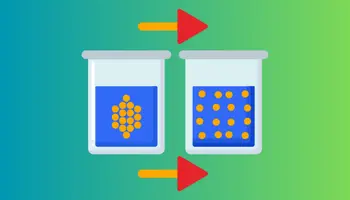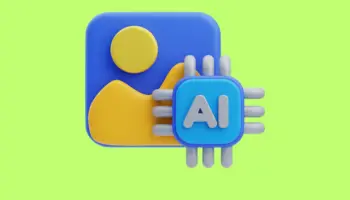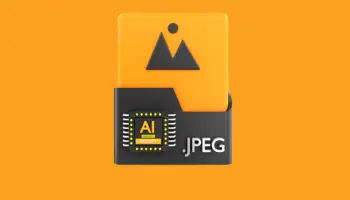What AI Image Gene...
How to Make an AI Image Generator
- Teaser: "Unleash your creativity with AI-generated images! Learn how to harness the power of artificial intelligence to create stunning visuals effortlessly."
- Prompt Hint: "Explore the world of AI image generators and their applications in various industries."
- Prompt Example Input: "Write an article about the benefits of using AI image generators for graphic designers."
Model, Token size:
- Model: GPT-3.5
- Token size: 175 billion
List of Prompts:
- "Discuss the impact of AI image generators on digital marketing strategies."
- "Explore the ethical implications of using AI image generators in media production."
- "Write a comparison between different AI image generation frameworks such as TensorFlow and PyTorch."
- "Investigate the role of AI image generators in revolutionizing the gaming industry."
- "Explain how AI image generators can assist medical professionals in diagnostic imaging."
Introduction to AI Image Generators
In today's digital era, the demand for creative and visually appealing content is higher than ever before. From marketing campaigns to entertainment media, the need for high-quality images is omnipresent. This is where AI image generators come into play. These innovative tools leverage the power of artificial intelligence (AI) to create stunning visuals with minimal human intervention.
Understanding the Technology Behind AI Image Generators
At the core of AI image generators lies advanced machine learning techniques, particularly deep learning. Neural networks, inspired by the human brain, form the foundation of these systems. Among the various architectures, Generative Adversarial Networks (GANs) have emerged as a prominent choice for image generation tasks.
Choosing the Right Tools and Frameworks
Selecting the appropriate tools and frameworks is crucial for developing an AI image generator. Popular frameworks such as TensorFlow and PyTorch provide comprehensive libraries and APIs for building and training AI models. Factors like community support, scalability, and compatibility with existing systems should be considered during the selection process.
Data Collection and Preprocessing
The quality of training data significantly impacts the performance of an AI image generator. It's essential to collect diverse and representative datasets relevant to the desired output. Additionally, preprocessing techniques such as normalization and augmentation help enhance the model's robustness and generalization ability.
Model Training
Once the data is prepared, the next step involves training the AI model. This process typically requires significant computational resources and may involve training on specialized hardware like GPUs or TPUs. During training, the model learns to generate images by iteratively adjusting its parameters based on feedback from the training data.
Fine-Tuning and Optimization
To achieve optimal results, fine-tuning and optimization techniques are applied to the trained model. This involves adjusting hyperparameters, optimizing loss functions, and implementing regularization methods to prevent overfitting. Continuous experimentation and refinement are necessary to improve the model's performance.
Generating Images
With the trained model in place, users can start generating images by providing input parameters or seed values. Depending on the complexity of the task, the model can produce high-quality images with remarkable realism and detail. Fine-tuning the input parameters allows users to control various aspects of the generated output.
Evaluating and Refining Results
Evaluating the quality of generated images is essential for assessing the model's performance. Metrics such as perceptual similarity and image fidelity are commonly used for this purpose. Based on feedback from evaluation metrics and user preferences, the model can be refined iteratively to produce better results.
Applications of AI Image Generators
AI image generators have diverse applications across various industries. In the field of design and art, these tools enable creatives to explore new possibilities and push the boundaries of creativity. Moreover, industries like healthcare, gaming, and e-commerce benefit from AI-generated visuals for tasks ranging from medical imaging to virtual prototyping.
Challenges and Limitations
Despite their potential, AI image generators face several challenges and limitations. Ethical considerations regarding the authenticity and manipulation of images raise concerns about misinformation and privacy infringement. Moreover, the current technology has limitations in generating highly detailed or contextually accurate images.
Future Trends and Developments
Looking ahead, the future of AI image generators is promising. Continued advancements in deep learning algorithms, coupled with increased computational power, are expected to fuel innovation in this field. Additionally, interdisciplinary research efforts could lead to breakthroughs in areas such as image synthesis and style transfer.
Case Studies
Real-world examples showcase the practical applications of AI image generators. From generating lifelike portraits to creating synthetic training data for computer vision algorithms, these case studies demonstrate the versatility and potential impact of AI-generated images across various domains.
Tips for Success
For aspiring developers and enthusiasts, here are some tips for success in building AI image generators:
- Start with simple projects and gradually explore more complex tasks.
- Stay updated with the latest research and developments in the field.
- Experiment with different architectures and techniques to find what works best for your specific use case.
- Collaborate with peers and participate in online communities to share knowledge and experiences.
- Don't be afraid to experiment and embrace failure as part of the learning process.
Conclusion
AI image generators represent a groundbreaking advancement in the field of computer vision and artificial intelligence. By harnessing the power of deep learning, these tools empower users to create captivating visuals with unparalleled realism and creativity. As technology continues to evolve, the possibilities for AI image generators are limitless, promising a future where imagination is the only constraint.
FAQs00
What is the difference between AI image generators and traditional image editing software?
AI image generators leverage advanced machine learning algorithms to create images autonomously, whereas traditional image editing software requires manual intervention from users to manipulate images.
Can AI image generators be used for generating realistic human faces?
Yes, AI image generators can produce highly realistic human faces by learning from large datasets of human portraits and incorporating sophisticated rendering techniques.
How long does it typically take to train an AI image generation model?
The training time for an AI image generation model varies depending on factors such as dataset size, model complexity, and available computational resources. It can range from several hours to several days or even weeks for more complex models.
Are there any legal concerns associated with using AI-generated images?
Yes, the use of AI-generated images may raise legal concerns related to copyright, privacy, and authenticity. It's essential to consider these factors and ensure compliance with applicable laws and regulations.
Can AI image generators be used for generating 3D images?
While most AI image generators focus on generating 2D images, there are emerging techniques for generating 3D images using deep learning approaches. However, generating high-quality 3D images typically requires more advanced algorithms and computational resources.
Prompt Example
AI image generators have revolutionized the way graphic designers approach their work. By leveraging the power of artificial intelligence, designers can now create stunning visuals with unprecedented speed and efficiency. Gone are the days of spending hours painstakingly crafting each element of a design; with AI image generators, designers can simply input their specifications and let the algorithm do the rest. This not only saves time but also allows designers to explore new creative possibilities that were previously unimaginable. Additionally, AI image generators can help designers overcome creative blocks by providing them with inspiration and ideas for their projects. Whether it's generating background images, creating custom illustrations, or designing unique logos, AI image generators have become indispensable tools for graphic designers around the world.Recent Prompts

What AI Image Generator Is E...
Last updated 1 month ago

How to Make an AI Image Gene...
Last updated 1 month ago

What is the Best Free AI Ima...
Last updated 1 month ago

How to Use the Bing AI Image...
Last updated 1 month ago
.webp)
Understanding the Evolution...
Last updated 1 month ago

Leveraging the Power of AI f...
Last updated 1 month ago

Level Up Your Bullet Journal...
Last updated 1 month ago

Design Inspiration: Eye-Catc...
Last updated 1 month ago

Unleash Your Inner Foodie: D...
Last updated 1 month ago

ASMR Prompts for Relaxation...
Last updated 1 month ago







